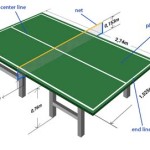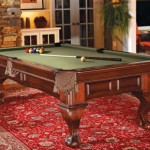How Tall Is a Dining Room Table? Understanding Standard Dimensions and Variations
The dining room table is a central piece of furniture in many homes, serving not only as a place for meals but also as a gathering spot for family and friends. A critical aspect of choosing the right dining room table is its height. Selecting the correct height is paramount for ensuring comfort and functionality during meals and other activities.
The perception of a dining table's height might seem simple, but there are nuances to consider. Standard heights exist for a reason, designed to accommodate a wide range of individuals and dining chair designs. Deviations from these standards, even slight ones, can significantly impact the overall dining experience. This article provides a comprehensive guide to understanding the standard height of a dining room table, exploring potential variations, and offering considerations for selecting the optimal height for specific needs.
Understanding Standard Dining Table Height
The generally accepted standard dining table height is between 28 and 30 inches (71 to 76 centimeters). This measurement is taken from the floor to the top surface of the table. This height range is designed to comfortably accommodate most adults and allows for adequate legroom when seated. It also allows for a reasonable distance between the tabletop and the diner's lap, preventing discomfort and facilitating ease of movement during meals.
The reasoning behind this standard height is rooted in ergonomics and the average human body proportions. Through years of observation and design refinement, furniture manufacturers have converged on this range as providing the best balance between accessibility and practicality. This height allows for comfortable use with standard dining chairs, which typically have a seat height of around 18 inches (46 centimeters). This creates a comfortable space for legs and knees under the table.
It is important to note that this standard height is not arbitrary. It is based on extensive research and understanding of human biomechanics. Deviations from this height can lead to discomfort during long meals or hinder the ability to fully enjoy the dining experience. Therefore, when considering dining table options, the 28 to 30-inch range serves as a reliable benchmark.
Factors Influencing Dining Table Height
While the standard height provides a useful guideline, various factors can influence the ideal height of a dining table for a specific space and user. These factors include the height of the chairs used with the table, the intended use of the table, and the personal preferences of the users.
Chair Height Compatibility: The height of the dining chairs is arguably the most crucial factor to consider when determining the optimal table height. The ideal space between the chair seat and the tabletop is typically between 10 and 12 inches (25 to 30 centimeters). This spacing provides adequate legroom and allows for comfortable arm positioning while eating. If the chairs are particularly tall, a slightly taller table might be necessary to maintain this comfortable distance. Conversely, if the chairs are lower than standard, selecting a dining table on the lower end of the 28 to 30-inch range might be more appropriate.
Intended Use of the Table: The primary use of the dining table also plays a role in determining the ideal height. If the table is primarily used for formal dining, then the standard height range is usually sufficient. However, if the table is also intended for other activities, such as working from home, crafting, or playing games, then a slightly taller table might be preferable. A taller table can provide a more comfortable posture for extended periods of sitting and working. In such cases, a counter-height table, which typically ranges from 34 to 36 inches, might be a better option. Counter-height tables are often paired with stools rather than traditional dining chairs.
User Preferences and Accessibility: Personal preferences and accessibility needs should also be taken into account. Individuals who are particularly tall may find standard height tables uncomfortable, as they may require more legroom. In such cases, a taller table, perhaps slightly above the standard 30 inches, could be beneficial. Conversely, individuals who are shorter may find standard height tables too high, leading to discomfort and difficulty reaching the tabletop. In these situations, a table on the lower end of the standard range, or even a custom-made table, might be more suitable. Similarly, individuals with mobility issues or disabilities may require a table height that accommodates their specific needs and allows for easy access.
Exploring Alternative Dining Table Heights
While the standard dining table height of 28 to 30 inches is the most common, alternative heights exist to accommodate various design styles and functional requirements. These alternatives include counter-height tables and bar-height tables.
Counter-Height Tables: Counter-height tables, also known as gathering tables, typically range from 34 to 36 inches (86 to 91 centimeters) in height. These tables are designed to be used with counter stools, which typically have a seat height of around 24 to 26 inches (61 to 66 centimeters). Counter-height tables are often used in kitchens or informal dining areas, providing a more casual and social dining experience. They can also be used as a workspace or a serving area during parties. The taller height can be advantageous for those who prefer to stand or lean while working or socializing.
Bar-Height Tables: Bar-height tables are the tallest of the dining table options, typically ranging from 40 to 42 inches (102 to 107 centimeters) in height. These tables are paired with bar stools, which typically have a seat height of around 30 inches (76 centimeters). Bar-height tables are often found in bars, restaurants, and entertainment areas. They can also be used in homes to create a more relaxed and informal atmosphere. The increased height allows for enhanced visibility and creates a more social and interactive dining environment. However, they may not be suitable for individuals with mobility issues or young children.
When considering alternative heights, it is crucial to ensure that the chairs or stools are appropriately sized to provide comfortable seating. The ideal distance between the seat and the tabletop should remain within the 10 to 12-inch range. Failing to maintain this spacing can result in discomfort and an awkward dining experience.
In addition to these standard alternatives, custom-made dining tables offer the flexibility to create a table that perfectly matches specific needs and preferences. Custom tables can be designed to any height, width, and length, allowing for complete personalization. This is a particularly useful option for individuals who require a specific height due to physical limitations or have unique design requirements.
Beyond the overall height, it is also important to consider the thickness of the tabletop. A thicker tabletop will reduce the amount of legroom available under the table. When calculating the optimal height, it is beneficial to account for the tabletop thickness to ensure adequate space for comfortable seating. Typically, table tops range from 1 inch to 3 inches in thickness depending on the material and design.
Furthermore, the style and design of the table base can affect the user experience. Some table bases, such as pedestal bases, may offer more legroom compared to tables with legs at each corner. Considering the design of the base and its impact on legroom is important when selecting a dining table.
In summary, determining the appropriate dining table height involves considering a range of factors, including the standard height range, chair height, intended use, user preferences, and alternative height options. By carefully evaluating these aspects, individuals can select a dining table that provides both comfort and functionality for their specific needs and preferences.

What Is The Ideal Dining Table And Chair Height
Optimal Sizes For The Dining Room Kitchen Furniture Urban Quarter

What Is The Ideal Dining Table And Chair Height

What Is The Ideal Dining Table And Chair Height

Dining Table Height Chair

What Is The Ideal Dining Table And Chair Height

The Right Size Dining Table For Your Space

Standard Dining Table Dimensions The Size Guide

Common Dining Room Table Shapes Sizes And Base Types Furniture Showcase

8 Key Dining Table Dimensions Castlery Us
Related Posts








